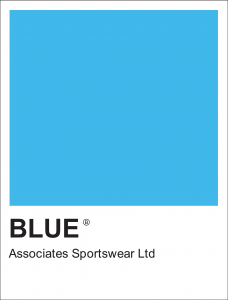All athletes love the environment and most train outside with many of the sports they actively do taking place in the woods, mountains, rivers or oceans. Sportswear is part of the fast-paced fashion due to the heavy wear of activewear garments and constantly changing trends, creating a huge burden on the environment. Brands are starting to make the transition into more sustainable production, and some have already declared themselves completely sustainable
From a customer’s point of view, it is still difficult to identify a truly ethical brand, as many companies use “Sustainability” as their general advertising slogan in an attempt to win new customers. So how do you identify a high-quality sportswear brand rather than the empty promises being advertised? Below is a short introduction to some of the best sustainable materials, fibres and fabrics used for sportswear to help you to choose the most sustainable option.
Traditional Natural Materials
One of the most common natural fibres that has been used for decades in everyday life is cotton. It isn’t however very technical but instead works as a soft and comfortable fabric for non-aerobic activities. The functional properties and durability of the cotton garment can be increased by blending it with other fibres. Traditional cotton production requires enormous amounts of pesticides that have a huge environmental impact and pose a health risk to those who work around it.
Organic cotton can be grown ethically without a massive amount of chemicals, but this process is much slower and therefore not as effective if cost is driving the commercial aspect of the fabric. The manufacturing process also requires a huge amount of water, but some ethical brands and fabric mills have found ways to optimise their manufacturing process to reduce water usage making it more sustainable and environmentally friendly. Always choose organic cotton wherever possible and blended it with other performance fibres to help it perform better for the athlete.
Hemp and Bamboo are traditional fibres that substitute cotton and are more ethically produced than cotton. Incredibly fast growing, bamboo grows without the need for insecticides and pesticides and also does not require replanting. Bamboo can also be transformed easily into yarn without the need for huge amounts of water and contains natural moisture-wicking properties making it more ideal for high aerobic activities.
Bamboo usually produced a soft hand feel however, the development of bamboo into soft yarn is a long process in which bamboo often passes through a heavy chemical process. One example of chemically processed bamboo is the material called Bamboo Rayon. The chemical process is commonly used to turn bamboo fibres into a soft handle, silk-like material. Some fabric mills have started to use lyocell technology (brand name TENCEL®) to transform bamboo into a soft textile without the use of so many chemicals.
Hemp has been used in the textile industry for thousands of years and is the most sustainable and durable option also for naturally sourced activewear textiles. Hemp is naturally UV-protective and holds its shape because it stretches less than other natural fibres. This often prevents hemp from being used in performance sportswear as most sportswear requires a degree of stretch and movement. Growing hemp is also more sustainable than cotton and bamboo and grows more densely, needing no pesticides or herbicides and returns almost 70% of the nutrients it takes back to the soil.
The manufacturing process of hemp textile can be done organically through a mechanical process that requires no chemicals. Despite that, some companies produce hemp fabric chemically, in a process that is much more harmful to the environment, but faster and cheaper to create. So again, when choosing your hemp garment use only sustainable branded help suppliers.
Recycled Materials
Most performance sportswear is often made of synthetic fibres due to their long-lasting properties and cost-effective manufacturing process. There are many environmental disadvantages of using synthetic fibres which are all made from synthesised polymers. The compounds that are used to make these synthetic fibres come from raw materials such as petroleum-based chemicals or petrochemicals and in addition to the environmental burden of petroleum-based chemical production, the constantly changing trends and lack of recycling makes synthetic materials one of the worst environmental pollutants.
To date, there is no defined time period for how long it takes synthetic fibres to start to break down when dumped in landfills and experts say this could take as long as 50 years before this process starts but could take many more decades. When it does break down, the fibres will penetrate the earth where it was dumped with toxic petrochemicals and therefore the damage continues.
Recycled polyester has boomed recently due to the innovations and exposure of the plastic waste dumped into our oceans. Repreve is one of the high-quality materials made out of recycled water bottles and some brands are starting to use Repreve in a few of their products. Many eco-conscious start-ups and smaller brands have established their entire production around recycled polyesters to help give them a unique environmental difference.
Sustainable Options
The sustainable textile industry is developing at a fast pace, today we have fabrics made of recycled pineapple peels up to different variations of wood-based fabrics. There are several innovations used for transforming our waste into durable, performance activewear. One example of this is Cupro that is a regenerated cellulose fibre derived from cotton linter that is the short downy fibre used from the cotton seeds. These fibres are not used in cotton production and are usually thrown away, however now these fantastic fibres can be transformed into Cupro.
Cupro is made in Japan to strict Japanese standards with absolutely no factory pollution. The production process is very strict and monitor’s with nothing harmful being released into the environment and only using clean water systems.
As a material Cupro is a smooth, hypoallergenic, anti-static fabric with great resilience, especially in higher temperatures and can be machine washed and dried with no harm to its structure. The breathable material has micropores that quickly absorb moisture and release it to the outside surface of the fabric making it a fantastic to regulate body temperature by effectively reducing clinging and transporting moisture away from the skin.
Another great alternative is Tencel™, the sustainably sourced natural wood-based fibre. This durable and easy to care material is also soft, breathable, lightweight and gentle against the body. Tencel™ has amazing properties with a balance of softness and great supporting compression. Made from the natural cellulose found in eucalyptus wood pulp. The fibre is economical in its use of energy and natural resources and is fully biodegradable.
Finally, another new fibre, called Micromodal®, is extracted from Beechwood which is sustainably grown in Europe. Beech trees are ecological as they grow by rejuvenation meaning that the trees propagate themselves and no artificial irrigation or planting is required.
Micromodal® fibres are produced using Swiss Edelweiss® fibre technology. It is a “symbiotic” production process where the raw material is generated at the same site as the modal fibre itself, in a meticulous closed-loop system. The process conserves energy and is an entirely non-toxic process creating a fully bio-degradable thread. Micromodal® is the finest of all the Modal® family, making the most lightweight and comfortable garments. It is super soft and has the breathability of Cotton.
Merino Wool
In some sports, merino wool garments are also a great addition and have been used for decades. Typically, we see wool garments in outdoor, trekking and skiwear, however, many brands are now using merino wool also as part of activewear collections, in yoga wear, running clothes or even in a gym and fitness. It is breathable, fast wicking regulates your temperature and is odour resistant. The natural grease and structure of the wool fibre makes the material antibacterial and even dirt repellent.
Cashmere is a finer fibre than merino wool and is stronger, lighter, softer, and approximately three times more insulating than merino sheep wool, however, it is much more expensive and therefore commonly used only in luxury branded garments.
As the world wakes up to the harm Petrochemical and plastics do to the planet, consumers will drive the need to produce materials from more sustainable and environmentally friendly alternatives and synthetic fibres will be a thing of the past. At Blue associates Sportswear, we work with many suppliers and fabric mills around the world that offer these sustainable and eco-fabrics so that we can present them to our clients who are looking for alternatives to synthetic fibres.
If you are looking to produce sportswear using recycled or environmentally friendly fabrics, then please get in touch for more information.





